Replantation of two embryos with eco-recommendation. What can affect the outcome of replanting. Feelings after IVF.
Monday, May 2, 2016
The statement that it was not difficult for our ancestors to conceive and give birth, unlike us - the generation of the era of progress, is only partly true. And earlier there were problems of fertilization and gestation, but they were not able to solve them the way they do now.
The ecology on which we depend today really needs to be protected, and this is manifested in the increasing frequency of not always explainable cases of infertility. But the possibilities of modern doctors have increased incredibly, thanks to which the chance to give birth to a healthy baby has appeared even for women with the most disappointing diagnoses.
An effective complex treatment method called IVF (in vitro fertilization) is becoming more and more popular every day. Embryo implantation is recommended for complete female infertility (when both fallopian tubes are recognized as impassable), for male infertility; when, as mentioned above, the reasons for the non-occurrence of pregnancy cannot be determined or errors were made in the treatment of patients with various other forms of infertility. Treatment is permissible by doctors for no more than 1.5–2 years: if they are not effective, one should proceed to IVF.
Embryo development prior to IVF replanting
In vitro fertilization consists of several stages, the most important of which is the replanting of embryos. This is such a crucial moment that it requires especially careful preliminary preparation. A woman needs to follow all the doctor's recommendations for examining the pelvic organs and the microflora around the uterine cavity, which largely determines the conditions for successful conception; treatment of possible sexual infections, restoration of hormonal balance, stimulation of the ovaries. When the endometrium of a woman becomes favorable for IVF, they begin to transfer embryos, which must first undergo their development.
After the follicles with eggs mature, the doctor punctures the ovary, extracts the eggs, then they are fertilized with the husband's sperm (in some cases, the donor). This happens separately from the mother's body. In the event that the husband has a low sperm quality, one sperm is injected using an ICSI microneedle. From English Intra Cytoplasmic Sperm Injection (ICSI) is translated as "the introduction of a spermatozoon into the cytoplasm of the oocyte."
The cytoplasm is the most important cellular part responsible for the ability to develop the cell as a whole.
Oocytes are future eggs.
In general, in medicine there are 2 methods for preparing embryos:
auxiliary hatching;
vitrification.
Embryo hatching is a mechanical or chemical effect on the shell of the fetal egg with the embryo inside to weaken. What helps the fetal egg easier to get out of the shell and then attach to the uterus.
Vitrification of embryos is a "fantastic" phenomenon of the 20th century - freezing of viable embryos in liquid nitrogen.
Transfer of frozen embryos
Once upon a time, we perceived the ideas of scientists that a person is able to achieve immortality by freezing his body as something out of the ordinary. The thought, however, excited mankind, and therefore novels and films that play on this possibility were popular.
And although the ideas remained ideas, the freezing of the "future man" has been a wonderful reality for several years now, allowing scientists, based on experimentally proven methods (and with God's help, of course), to create a new human life.
So, embryos at a temperature of -196° are treated with liquid nitrogen. In the process, 30% of them die, unable to endure stress, the rest retain the ability to develop and can endure " ice Age"Several years. This storage process has received the name "cryopreservation" in medicine.
The most famous in Russia was the case of the use of embryos after vitrification by show business stars Alla Pugacheva and Maxim Galkin. According to the artists themselves, they were able to give birth to Lisa and Harry - twins - thanks to freezing. Alla is 64 years old, and Maxim is 37, but they were able to become parents, since Pugacheva "just in case" froze her eggs back in the early 2000s. True, a surrogate mother helped the spouses carry the babies. But this is a topic for a separate discussion. Most importantly, the impossible became possible and made two loving people happy. And how many such wonderful cases are happening all over the world!.. Needless to say, praise to medicine!
Frozen embryos are used for transplantation only those that have the greatest strength. And in general, only viable embryos at a certain stage of development can be frozen (weak ones are dangerous due to their tendency to destruction). They can be stored frozen for an unlimited number of years, but the defrosting process is stressful for them. So good embryos may die, but those that survived give hope for a positive result.
Embryo transfer procedure in detail
Embryo transfer during IVF is divided into 2 stages: either on days 2 and 5, or on days 3 and 5, depending on individual indications. Such terms are connected with the fact that specifically on the 5th day the fetal egg is implanted during natural fertilization.
With IVF, the replanting of 2 embryos is officially acceptable. Why is the official version limited to the number 2? The fact is that sometimes embryos take root as much as they planted. And then the risk of losing a pregnancy increases significantly, because IVF gets women who, for various reasons, could not get pregnant on their own. Therefore, doctors for safety net produce a reduction of embryos (removal of embryos - one or more).
Contrary to the fears of future parents, the transfer of embryos using IVF is not considered difficult (it takes 10-15 minutes) and is completely painless. The gynecologist with the help of ultrasound and, accordingly, with constant monitoring of what is happening on the computer monitor, conducts a catheter into the uterine cavity through the cervical canal. This is where the embryos are transferred.
Any recommendations during this period must be agreed with the treating doctor, even those that are informally discussed by women who have experience in participating in the IVF procedure. It is noted that it is useful to apply the following measures:
eat protein foods and pineapples, drink plenty of fluids, but only one that does not cause flatulence in the stomach; only freshly squeezed juices are allowed;
a few hours before replanting, intimacy with a partner is desirable for better blood circulation in the uterus, which will help the embryos implant more easily (however, after replanting, it is dangerous to have sex until hCG analysis or the first ultrasound);
2 hours before the start of the embryo transfer procedure, one tablet of piroxicam (PIROXICAM) is taken, which has a beneficial effect on successful implantation.
Traditionally, in IVF clinics, on the day of the puncture, blood is taken from women for estradiol ( female hormone showing the functional state of the ovaries). You should save the result in order to make comparisons later.
Rules of conduct after replanting
So, the most crucial moment is over, but the next most important stage in the development of events is coming - the adaptation of the body to the implanted embryo. How should a woman behave, how to eat?
The diet after replanting is determined by the individual condition of the patient. If there is no threat of OHSS (ovarian hyperstimulation syndrome), then it is better to eat as usual. It is very dangerous to throw fanaticism into a new diet that is contrary to the usual diet. The body should not experience stress. The state of physical and mental peace - rule number 1! In the first three days after the procedure, you should generally lie flat, getting up only when necessary to go to the toilet and bathroom.
After these days of rest, on the contrary, it is better to start moving, but slowly, walking slowly in the fresh air. As before replanting, you need to eat protein foods, avoiding chicken meat, into which drugs harmful to the body are injected for rapid growth. For a woman, this is not scary - for the fetus it can matter. Pure water in large quantities, if there are no health restrictions, is also very useful.
Diagnosis of pregnancy after replanting
After embryo transfer, as a rule, there is an increase in temperature. If the woman has not been warned about this, she may panic. There will be a desire to bring down the temperature just in case. In no case should this be done if the mark on the thermometer is not higher than 37.5. These indicators indicate the predicted reaction of the body to the invasion of a foreign body. This is such a "protest", which should be given a little time and not protest in response.
The appearance of temperature may mean:
a sharp release of progesterone;
the reaction of the body to the embryo after ingestion in large quantities hormonal drugs;
that the desired pregnancy has already occurred.
In the process of adapting the body to a new situation, the immune system struggles for internal balance, hormones that support gestation begin to be produced, and everything gradually returns to normal. But, of course, the doctor must be aware of the temperature increase in his patient and monitor the changes all the time. The norm or deviation from it can only be ascertained by a specialist. Moreover, sometimes a fever can indicate an infection or an ectopic pregnancy.
Post-embryo transfer follow-up scale basal body temperature cannot be considered indicative and reliable, because hormonal drugs affect the woman's condition. But still, these data are also taken into account.
Support in the form of 2 injections of utrogestan at night and 1 injection of progesterone during the day is prescribed immediately. Also, after the puncture, all patients are given five-day injections of fragmin, which improves blood circulation in the uterus.
Next, they look at the coagulogram (the results of the analysis of the blood coagulation system). If it is normal, then no more fragmins are prescribed. Only in case of deviations, for example, with increased clotting, etc., the patient is prescribed any individual treatment - depending on the situation.
Symptoms and sensations after replanting
And according to doctors, and according to the reviews of women on forums on the Internet, it turns out that the symptoms after transplantation resemble the state at the beginning of menstruation: the stomach pulls strongly above the pubis and weakness appears. This is usually. But sometimes there are small spotting. If they occur on days 6-12, this may indicate implantation bleeding, it will be pink. It does not last long - a few hours - and indicate that the fertilized egg has penetrated the wall of the uterus, which, in fact, was achieved by doctors when conducting IVF.
But, of course, bleeding can also be an alarming symptom. hormonal disorder in a woman's body. And here the responsibility lies largely with the attending doctor: it is he who must monitor the balance between the content of estradiol and progesterone in the body of his patient. To do this, he prescribes special drugs. Spotting may indicate an imbalance, and then an urgent need to change the dose of drugs.
Bright and strong spotting after the embryo transfer procedure indicates the rejection of the fetal egg. In this case, you should not "wait for the weather by the sea", but urgently contact a gynecologist for advice. With the threat of a miscarriage, hospitalization can be the measure that will help maintain the pregnancy.
In a word, IVF is a delicate process, and if you follow all the recommendations of doctors, and most importantly, with the personal strength of intention, you can really fulfill your dream of bearing and giving birth to a healthy baby.
When all the procedures associated with treatment, ovarian stimulation, collection of oocytes are in the past, one thing remains, but the most important event is embryo transfer. Finally, something happened for which it all began and lasted so painfully long. By the way, among doctors it is not customary to talk about replanting embryos. A more accurate term would be embryo transfer. However, this does not change the essence of the process.
In order for all efforts not to be in vain, you need to be especially careful right on the day of embryo transfer and a few days after that. This concerns the behavior of a woman - you should not rush headlong to plant potatoes or glue wallpaper in a juicy order. All this is not worth what you have experienced, and for what it was all.
Rules of conduct after embryo transfer:
- no physical activity, bed rest for the first 10 days after embryo transfer. You can get out of bed only in extreme cases and to visit a doctor. The first few days are extremely important for the implantation of transplanted embryos;
- lack of sexual intercourse for the first 3 months after transplantation. This is very important - the first 12 weeks are extremely dangerous for miscarriages;
- strict adherence to the instructions of the doctor;
- proper nutrition - it is important that protein foods are present in the diet. It is better to cook for a couple or boil vegetables, fish, meat. You can drink fruit drinks, dairy products, green tea, rosehip broth;
- - every day at the same time. The results obtained must be carefully entered into a notebook, build a graph. Pay attention if for 3 consecutive days the level of basal temperature is below 37 degrees. This is an occasion for an urgent call to the clinic and a meeting with the doctor.
Embryo development after IVF
The transfer of the embryo into the uterus occurs under the control of ultrasound, which is performed transabdominally (through the abdomen). What happens after the replanting of embryos is, first of all, their implantation. The replanting itself is not the moment of pregnancy, it is necessary that the embryos are implanted first.
The development of the embryo after transfer (replanting) during IVF occurs according to the same scenario as in a normal pregnancy. The difference is that a woman is implanted with several embryos. All or several of them can take root. Dead or extra embryos are removed, leaving only 1-2 most viable embryos.
Doctors monitor the development of implanted embryos - they take tests for progesterone, hCG. They are carried out on certain days - on the day of transplantation, on the seventh and fourteenth day after the transfer. There is no need for more frequent monitoring. So, for example, the third day after embryo transfer is not indicative.
With the onset of pregnancy and its normal course, a woman does not need special monitoring by a doctor. Everything goes according to the same scheme as in a normal pregnancy.
Embryo death
Unfortunately, embryos do not always take root in the uterus. The figure is quite low, and at the same time almost 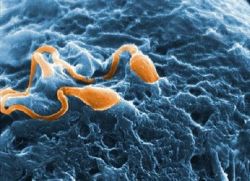 it is impossible to determine why the embryo does not take root and does not develop.
it is impossible to determine why the embryo does not take root and does not develop.
Therefore, usually 2 or more embryos are transferred to the uterus, which increases the likelihood of a long-awaited pregnancy. At the same time, the chance of multiple pregnancy increases. It is with the fact that more and more couples resort to IVF that the increased number of cases of the birth of twins and even triplets is associated.
After the failure, that is, the death of the embryos transplanted to the woman, a special medical commission of the center where you were treated evaluates the situation and makes recommendations regarding the further actions of the spouses.
The most important stage of in vitro fertilization is the transfer of embryos into the uterine cavity. It is with this that many discussions and experiences of future parents are connected. Everyone cares main question: how many embryos should be implanted during IVF? Some believe that it is optimal to transfer 1 embryo, others - 2 or more. In this situation, first of all, a woman should trust the reproductive specialist. The doctor, taking into account the individual characteristics female body will help to make right choice.
Preparing for IVF Embryo Transfer
Before implantation takes place, future mom must undergo appropriate examination. If any pathologies are found, the first step is treatment. You should also replenish the necessary level of hormones. A favorable hormonal background creates a prerequisite for the growth of the endometrium, which greatly increases the chances of engraftment of the embryo and a successful pregnancy.
Before implantation, embryos are prepared in two ways:
- Freezing (vitrification). The embryo is treated with liquid nitrogen. The temperature at the same time reaches - 195 degrees. Not all embryos can tolerate such conditions, 30% of them die, this is the disadvantage of the procedure. The rest can actively develop and grow.
- Auxiliary hatching. The procedure involves a mechanical or chemical effect on the shell of the embryo. As a result, it weakens, which contributes to the easy release of the fetal egg and its attachment to the uterus.
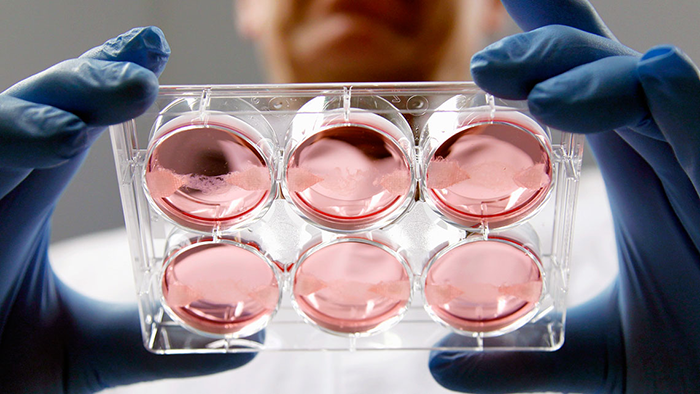
Embryos are transplanted on days 2 (or 3) and 5. Everything is decided individually. Why these days? Because with natural conception, the implantation of the embryo occurs on the 5th day.
How many embryos are transferred?
To the question: how many embryos are implanted during IVF? Reproductologists clarify - everything is individual. However, in most cases, when deciding how many embryos it is better to implant during IVF, 1 or several, preference is given to the second option. In general, the transfer of two fertilized eggs is considered optimal. But the doctor may decide to transfer three or even four embryos. It all depends on the state of the woman's reproductive system.
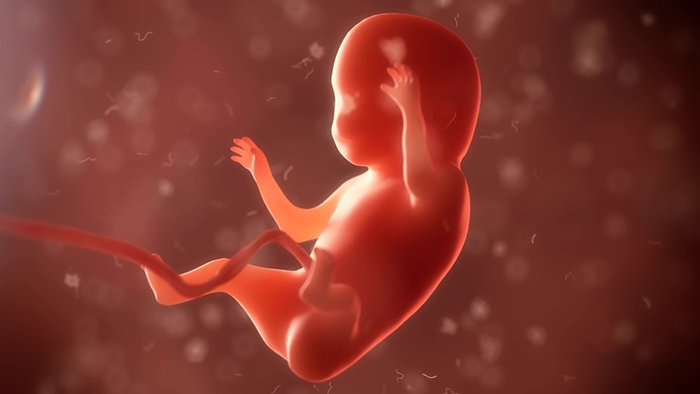
Important! If two or more embryos take root at the same time, then the risk of miscarriage increases significantly. Indeed, not always healthy women seek IVF help, and carrying a multiple pregnancy will only increase the chances of its failure. Therefore, doctors in this case carry out a reduction.
How is embryo transfer going?
The embryo transfer procedure is fully controlled by ultrasound. It is worth clarifying that the replanting of fetal eggs itself is not yet a pregnancy. This will happen when they are implanted. Their further development is no different from natural conception. The only difference is that during in vitro fertilization, several embryos can be implanted at once. Dead and non-survivors are removed.
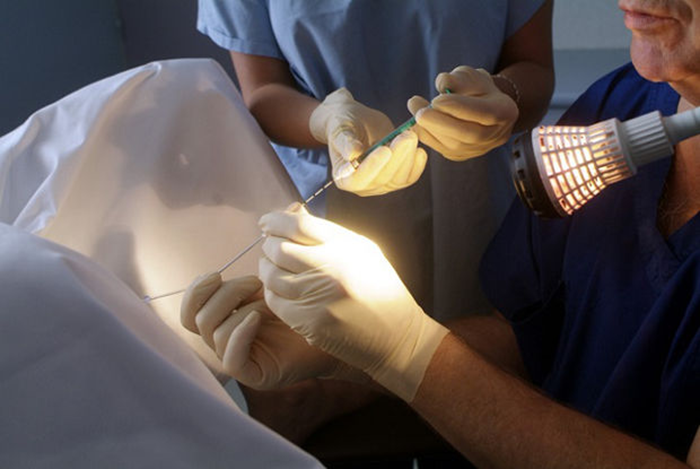
The implanted embryos are constantly monitored. Woman donating blood for determination hCG levels, progesterone. This must be done on strictly allotted days: 1, 7 and 14 days after replanting. It is possible to judge the success of IVF only after the analysis of hCG, carried out on day 14.
If the pregnancy is normal, the woman does not need constant medical supervision. Visits to the antenatal clinic are carried out, as in normal pregnancy.
For implantation to be successful, a woman must adhere to certain recommendations for IVF. How many embryos are implanted does not matter:
- For the first 10 days, exclude any physical activity. Bed rest is not necessary, it is important to exclude sudden movements, intensive walking, lifting heavy objects, and so on. This is the most important time for the engraftment of the embryo.
- Adhere to all medical recommendations.
- Sexual intercourse in the first 3 months after IVF is not recommended, however, everything is decided with a specialist on an individual basis.
- Daily measurement of basal temperature. It must be measured in the same interval. If the thermometer is below 37 for several days in a row, you should consult a doctor.
- Particular attention should be paid to nutrition. Eat more protein foods. It is better to steam or boil dishes. Dairy products, natural juices, fresh fruits and vegetables, boiled meat and fish, rosehip infusion - healthy foods in this period.
How is the endometrium prepared for embryo transfer?
Before embryo transfer, it is important to prepare the endometrium. Indeed, otherwise, engraftment will not take place.
A woman is prescribed progesterone preparations and other drugs that prepare the uterus and endometrium for embryo transfer. Before implantation, the endometrium is amenable to such changes:
- The mucosa thickens, becomes looser. The villi of the endometrium, gently enveloping the embryo, become a protective blanket for it.
- The number of blood vessels increases. The body is preparing for the fact that the supply of blood and nutrients will soon increase.
- The endometrium stores nutrients necessary for the development of the fetus.
What happens after the transplant?
The embryo transfer procedure takes about 5 minutes. On the same day, the woman will take blood for hormones. Since all modern IVF centers provide support in the early stages of pregnancy. Doctors will need the level of estradiol and progesterone in the future.
Be sure to assess the condition of the uterus and ovaries using ultrasound. An important role is played by the thickness of the endometrium. Against the background of ovarian stimulation during IVF, large cystic formations often occur. An experienced doctor can see the onset of ovarian hyperstimulation syndrome (OHSS). This is one of the most formidable complications of IVF.
The first 14 days after the transfer, outwardly, women do not notice any manifestations. However, processes are seething in the uterus that contribute to the fixation of the fetal egg. Only after this, the in vitro fertilization procedure can be considered successful.
You can learn about the successful fixation of the embryo only after the analysis of hCG, which is carried out two weeks after the embryo transfer.
Important! Do not attempt pregnancy tests before day 14. In this case, they are not informative and will only undermine the woman's psycho-emotional state with a negative result.
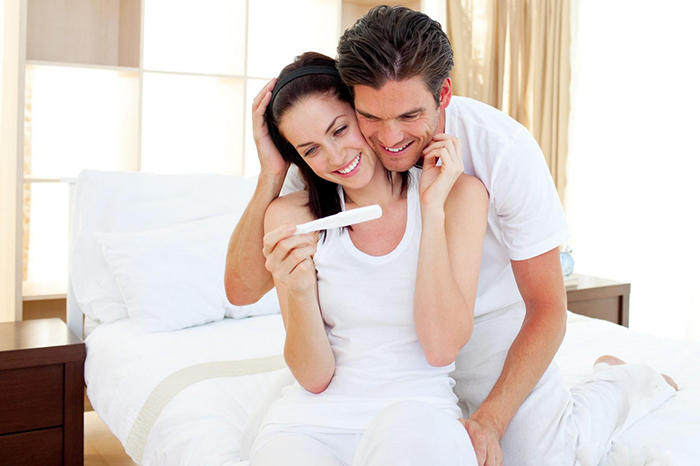
The first 14 days a woman should monitor her condition. The main thing is not to miss the OHSS. You should immediately consult a doctor if you experience the following symptoms:
- puffiness;
- persistent headache;
- intense pain in the ovaries and uterus;
- visual impairment, which manifests itself in the form of a veil or flies before the eyes.

The development of OHSS occurs gradually. With timely treatment, the disease is quickly eliminated. That is why when the first signs appear, you should immediately contact a specialist.
What is the difference between IVF and ICSI?
Often, couples seeking IVF help hear about the ICSI procedure. What is their difference?
Conception is carried out in different ways. With in vitro fertilization, the sperm and egg, previously removed, are outside the female body. The most active sperm in vitro fertilizes the egg. However, not always the sex cells of men are able to cope with the functions assigned to them. Sperm may be unable to fertilize. There are many reasons why this can happen: the abnormal structure of the cells, the absence of strong sperm in the semen, and so on. However, reproductive technologies do not stand still and can solve this problem.
Before an embryo transfer occurs during IVF, a high-quality spermatozoon is selected by the ICSI method, which is artificially introduced into the egg. That is, the chance of fertilization is greatly increased.
This method is used in case of problems with men's health, as well as if antisperm bodies are present in the female body. And also ICSI is resorted to when, during preliminary IVF attempts, pregnancy did not take place.
If the cause of infertility is in a woman, you can seek IVF help. If there are violations on the part of a man, ICSI is more effective for isolating one of the most active spermatozoa.
Why do embryos die?
Unfortunately, doctors cannot give an unambiguous answer to this question. Disappointing statistics show that engraftment of embryos in many cases does not occur. Therefore, when deciding how many embryos to transfer during IVF, in most cases, the choice stops at the number of 2 or more. At the same time, the likelihood of multiple pregnancy increases.
If the death of the embryo occurs and the pregnancy does not take place, the medical commission, which is in every IVF center, assesses the situation and gives further recommendations to the patient.
Conclusion
The in vitro fertilization procedure is a chance for those who lead a long and unsuccessful struggle for the right to become happy parents. Of course, the risk of not engrafting the embryos is high, but the chances of success are also quite high. The main thing is to follow all the recommendations of doctors, come to consultations on time and take the necessary tests.
But also women after IVF need to carefully listen to their health, especially in the first two weeks after embryo transfer. With alarming symptoms, do not hesitate and seek medical help in a timely manner.
Video: Just about IVF
Infertility is said to be in the event that, with regular sexual life without the use of contraception, pregnancy does not occur within a year. According to statistics, in Russia 15-20% of couples suffer from infertility.
With infertility, which is associated with a violation of the patency of the fallopian tubes and with male infertility, assisted reproductive technologies come to the rescue, in particular in vitro fertilization - IVF (embryo transfer). The essence of the method is that the fertilization of the egg occurs outside the female body, and then the embryos are replanted on the 2nd day.
Consider how a woman is prepared before embryo transfer, how embryo transfer occurs, and what a woman should do after embryo transfer.
IVF - embryo replanting has the following indications:
- obstruction of the fallopian tubes or condition after their removal;
- immunological infertility;
- endometriosis;
- decrease in sperm motility, a decrease in their number or the complete absence of sperm in the ejaculate.
Embryo replanting is also performed in cases where other attempts to overcome infertility have been ineffective for 1-1.5 years.
IVF - embryo replanting is performed under the condition that there are no signs at the time of the procedure inflammatory processes For spouses, the consent of both is also required. IVF - embryo replanting can be carried out only if the woman has no pathological changes in the uterine cavity and ovaries.
Examinations before embryo transfer
Spouses should be examined before embryo transfer in order to maximize the chances of pregnancy, as well as reduce the risk of possible complications.
Preliminary examination of a woman includes: examination by a gynecologist-endocrinologist, colposcopy, ultrasound examination, hormonal examination and examination for infections (toxoplasmosis, cytomegalovirus, herpes, syphilis, gonorrhea, chlamydia), vaginal swab and bacteriological analysis of the cervical canal.
The examination of a man includes an examination by an andrologist, a spermogram with the determination of sperm morphology, a MAP test, bacteriological and biochemical analysis of sperm, hormonal examination, and ultrasound.
Embryo transfer is a multi-step process, and its success depends on many factors.
Before the embryo transfer, the woman is stimulated to superovulate. To do this, on the first day of the cycle, she begins to take medicinal product stimulating ovarian activity. During one cycle, one egg matures, and under the influence of this drug, several eggs mature, so the chance of a successful procedure increases.
The developing follicles are constantly monitored by ultrasound, before the embryo transfer, the level of hormones is determined. The follicles reach the required size within 8-10 days, and after that the woman is injected chorionic gonadotropin, which ensures the final maturation of the eggs.
The next stage is the extraction of mature eggs, which is performed with a puncture needle under ultrasound control. Mature eggs are selected from the largest follicles. The procedure is performed on an outpatient basis.
The next step is to obtain spermatozoa. They are extracted from the ejaculate, and if there is not enough in the ejaculate, from the testicle or from the epididymis.
When sorting under a microscope, high-quality and mature eggs are selected. And to check the mobility and viability of spermatozoa, they are placed in a special environment. There are 50,000 - 100,000 sperm per egg. And only one sperm enters the egg - fertilization occurs. Two cells merge into one, which begins to divide.
When the embryos consist of 4-8 cells, they are ready to be transferred into the woman's body. This happens no earlier than after 48 hours, so most often embryo replanting is carried out on day 2. By the end of the second day, the quality of the embryo is assessed under a microscope. It must consist of at least four cells.
Various clinics practice different time embryo replanting, starting from the 2nd to the 5th day of its cultivation. Each clinic is based on its experience, observations and IVF results. On the one hand, on day 4-5, embryos consist of a larger number of cells, so there are more chances to survive.
On the other hand, embryo survival is better in the natural environment (in the uterus) than in artificial environments, so many clinics are of the opinion that it is better to transfer embryos on day 2. In addition, the "older" the embryo, the more requirements are imposed on culture media and cultivation conditions.
The implantation of embryos into the uterine cavity is carried out using a catheter, and to increase the chances of a positive result, 2-3 embryos are introduced. After successful replanting of embryos, drugs are prescribed that support their development. After 3 weeks, the fetal egg can be seen with ultrasound.
Is it possible to transfer frozen embryos
After replanting the embryos into the uterine cavity, it is possible to freeze the remaining high-quality embryos (type A and B) and store them for a long time at liquid nitrogen temperature. This is resorted to in case the attempt is unsuccessful or the pregnancy cannot be carried. Embryos tolerate freezing well and only 30% of embryos are then non-viable. If the embryos have undergone the process of freezing-thawing, then the replanting of frozen embryos is performed on the day of defrosting.
Frozen embryo transfer can take place according to different protocols, but in any case, ovarian puncture is not performed. The choice of protocol depends on the hormonal and reproductive status of the woman.
In the first case, with the preserved ovulatory ability of the ovaries, the transfer of frozen embryos takes place in the natural ovulatory cycle. The doctor observes the growth of the follicle and endometrium, and implants the embryos during ovulation. The transfer of frozen embryos according to this protocol allows the woman not to undergo repeated hormonal stimulation.
The second option is the replanting of frozen embryos in a stimulated cycle. According to this cryo-protocol, hormonal preparations are taken, which ensures the growth of the endometrium, and replanting does not depend on one's own ovulation.
In the third option, frozen embryo transfer is carried out with a stimulated cycle with simultaneous blockade of the pituitary gland. This option is the most expensive and drug-laden.
How to behave after embryo transfer
For the first three days after embryo transfer, a woman is often recommended bed rest. In the following days, the motor regimen can be expanded: walking, but without lifting weights. Of course, after embryo replanting, it is necessary to observe complete sexual rest until the time of the first ultrasound.
It is very important after the replanting of embryos that the medical prescriptions of the doctor are strictly followed.
The effectiveness of the IVF procedure ranges from 20 to 40%. Pregnancy after embryo transfer has its own characteristics. Most often, in female infertility, there are changes in the hormonal background, which affects the course and maintenance of pregnancy.
After embryo replanting, for the normal course of pregnancy, it is necessary to prescribe hormone replacement therapy throughout the pregnancy. Despite this, after embryo transfer, there remains an increased likelihood of abortion.
After embryo transfer, there may be multiple pregnancy, since in some cases several embryos are transferred into the uterine cavity to increase the likelihood of implantation.
However, multiple pregnancy in some cases is complicated by miscarriages and premature births. Therefore, after replanting embryos at 10 weeks, in order to reduce the percentage of miscarriage, a reduction procedure can be performed.
Modern life dictates dynamic development, and the flourishing of the industry invariably entails losses in the natural balance of man and nature. Increasingly, situations arise when a married couple cannot conceive a baby only by joint efforts. Sometimes the diagnosis of one of the spouses sounds like a sentence, but even the absolute health of the partners does not guarantee that the union will be rewarded with a long-awaited child.
When is IVF indicated?
It is prescribed no earlier than the examinations carried out confirm the impossibility of conception. Attempts to treat infertility are often delayed for many years, but the unproductive duration of the process can only reduce the likelihood of a favorable outcome. Seeing the ineffectiveness of the measures taken, a married couple has the right to insist on an IVF procedure already two years after the start of treatment.
How does the embryo develop?
After fertilization, the egg is placed in a comfortable liquid environment, close in characteristics to the natural maternal one. The transformation of an ordinary egg into a zygote, that is, a single-celled embryo, does not yet complete the process. Prior to embryo replanting during IVF, repeated cell division must occur under the constant supervision of an embryologist, who notes each new stage body development.
Starting from the second day from the fertilization of the cell, the doctor can already give a report on the compliance of the embryo with the parameters of the norm. Sometimes, if it is weak but viable, it is allowed to grow in an artificial environment until the formation of a blastocyst (this happens on the 6th day), and only then is it introduced into the uterine cavity. Such reinsurance is justified by reducing the risk for the mother, since it excludes the formation of several fetuses in the womb, and therefore minimizes the burden on the body.
With normal cell division, the allowable holding period for embryos is three days. After that, some of them, but no more than two, are transferred to the patient's body, and the strongest specimens of the remaining ones are frozen in liquid nitrogen. But how does embryo transfer occur during IVF? 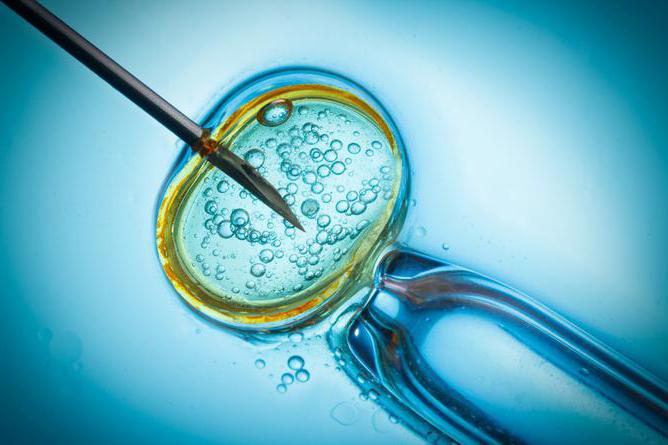
Preparing a woman for an embryo transfer procedure
The very decision to become a mother in a difficult way of replanting an embryo during IVF is a sufficient reason for a woman to reconsider her diet and daily routine. It is from the healthy immunity and strong nervous system of the expectant mother that the success of the procedure depends.
A few weeks before the date of egg retrieval, a woman is shown a protein diet with a minimum amount of fat and a complete exclusion from the menu of sweet starchy foods, as well as dishes containing soy protein and genetically modified elements. It is recommended to drink more pure water, natural fresh juices without artificial additives. From fruits, it is better to give preference to fresh pineapples (if there is no allergy).
Directly on the day of implantation of the embryo into the uterus during IVF, it is desirable to stimulate blood circulation in the pelvic organs, for which doctors advise the spouses to have sexual contact and only then, after the woman has performed hygiene procedures, get ready for implantation.
Two hours before the scheduled replanting time, the woman needs to take a Piroxicam tablet. Going to IVF, it is better to calm down, remember that the technology of embryo replanting during IVF is painless and not traumatic. 
embryo transfer procedure
The woman does not see how the embryo is being prepared for transfer, so she may not know that the shell of the embryo is deliberately damaged before implantation to facilitate the release of the egg. The procedure is called "hatching" and it is mandatory.
So how does IVF embryo transfer work? After talking with the doctor, the woman takes a comfortable position on the gynecological chair. At the same time, it is better for her to relax and close her eyes, and not to worry, watching how the embryo transfer is done. In IVF, the patient's willingness to remain calm is of great importance. The catheter, which the doctor inserts into the cervix, guided by ultrasound observation, does not cause serious discomfort if the pelvic muscles are relaxed and immobile.
Judging by the numerous female reviews, embryo replanting during IVF takes place, as was indicated in the preliminary conversations: painlessly and in an atmosphere of careful attitude of the staff. After removal of the catheter, the patient is asked to lie down on the couch on her back and spend a little less than an hour in this position. During this time, the embryologist will examine the viable embryos remaining in the catheter tube and, if the patient agrees, send them to 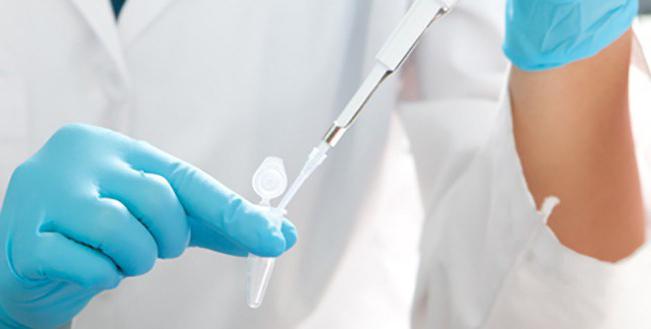
What is cryopreservation
Having received the prior consent of the couple, only strong and hardy specimens are selected from among the fertilized cells, those that will be able to survive under the stressful conditions of the subsequent defrosting. The more embryos that are cryopreserved, the more likely a woman will be to restart IVF on her next attempt, which may be years later.
Freezing of embryonic cells occurs at extremely low values of the mercury column, strictly -196 0 С. Since the procedure for treatment with liquid nitrogen and the subsequent rehabilitation of the embryo is a kind of hard hardening in the conditions of an uncompromising struggle for life, it is often more successful to re-plant embryos during IVF using thawed cells for woman. 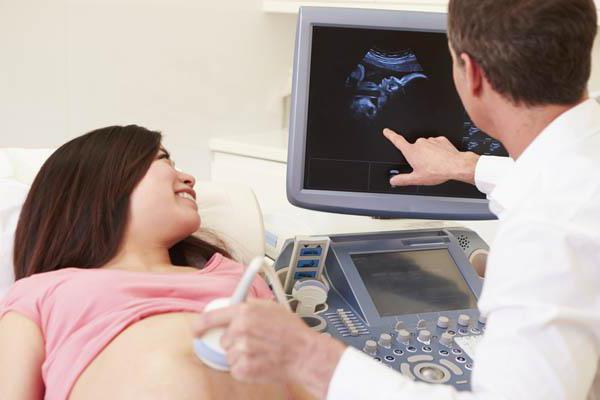
Adaptation after replanting
Starting from the moment a woman leaves the doctor's office, the most important thing for her in the next three days is peace. The mode after replanting IVF embryos within 72 hours provides for the practical immobilization of the patient. Even with rare getting up in the toilet room, the physical support of the husband is desirable in order to minimize the rush of blood to the pelvis. Water procedures on the first day are contraindicated!
The diet is discussed with the doctor in advance, but if the woman is healthy and does not have any special prescriptions, then after embryo replanting during IVF, you can eat everything that you used to, but with an emphasis on natural products, and, of course, without including coffee, fatty or large amounts of coffee in the diet. flour food.
After three days of lying down, the stage of moderate activity begins. Without sudden movements, a woman can carefully perform elementary household actions, walk on the street, avoiding any experiences. At this stage, it is important to drink plenty of pure non-carbonated water. 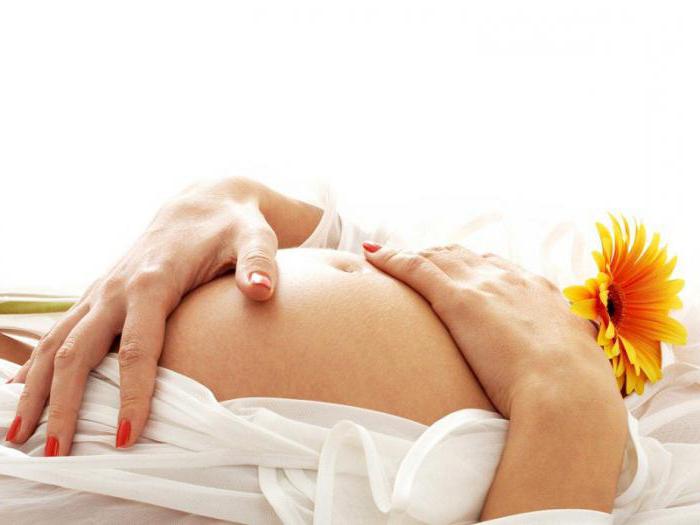
Control
In the first days after embryo transfer, a woman often faces the problem of fever, but if you remember the essence of the intervention in the body, the reaction of the immune system will become clear. The thermometer should not be lowered if the mercury column does not rise above 37.6 0. It is necessary to let the body “learn” new information on its own and come to terms with the fact. In the next visit to the doctor, such a phenomenon is recorded and analyzed.
You need to be careful about the prescribed injections. There will be three drugs in total (with a standard appointment): two injections of Utrozhestan on the night after the procedure, one injection of Progesterone in the morning and only five injections (according to the schedule) of Fragmin, responsible for normal blood circulation in the pelvic organs. "Fragmin" may be excluded from this list if, according to the results of the coagulogram, the patient's blood clotting does not deviate from the norm.
Body behavior as a consequence of the IVF procedure
The panic of women when they encounter phenomena after a puncture that seem incomprehensible to them is due to low information content. Below is a list of such phenomena, as well as options for the correct response to them:
- Drawing, obsessive pain in the lower abdomen after the procedure, as during menstruation, is the absolute norm. Nothing extra should be taken.
- Vaginal discharge in the form of a pinkish liquid on the 6th-12th day after the embryo transfer is an expected and desired phenomenon, indicating that the implant has fixed on the uterine wall. It is normal if bleeding of this kind lasts no more than 4 hours. The doctor must be informed about the situation and conduct an examination in order to correctly assess the patient's condition.
- Excessive bleeding or discharge of a thick color signal an unsuccessful replanting and the need for urgent hospitalization. In rare cases, urgent measures taken save the pregnancy.
Exactly two weeks after the puncture, a test for (hCG) is performed. The results are issued on the same day, and the woman can congratulate herself if the concentration of this important hormone is elevated. Sometimes the hCG test requires a repeat after 72 hours; such control is due to the presence of a weakly expressed concentration.
Seven days after donating blood for the hormone (with a positive answer), an ultrasound is performed, stating the onset of pregnancy. After another 14 days, the second is appointed - to assess the development of a fixed fetus.
In the case of negative HCG, the medication to maintain the IVF result is stopped.
Critical days, which should go on the 5th-7th day, serve as a certain indicator of a failed replanting attempt. 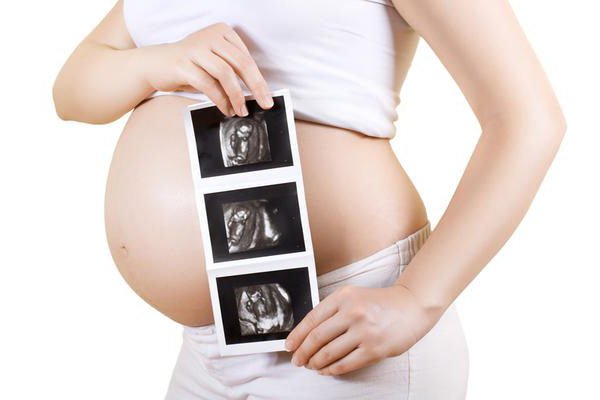
What can affect the outcome of replanting
Fibroids are a frequent factor that complicates the attachment of the embryo to the uterine wall. The replanting of 1 IVF embryo in this situation is carried out in such a way that the zygote is not near the tumor, which tends to grow. Other important conditions for the favorable survival of the embryo in the mother's body are the right time (usually on the 20th day of the cycle) and the optimal maturity of the fertilized cell. If other terms are set by doctors, you should take it calmly, since the body does not always work with the accuracy of the clock, and the nuances that take into account the individuality of the woman can determine a good outcome.
But even in the case of a negative test, you should not assume that the joy of motherhood is not for you - the real success rate after the first attempt rarely exceeds 45%. It may be necessary to slightly change the diet or give up bad habits if this has not been done before, and be sure to try again using germ cells after cryopreservation.




